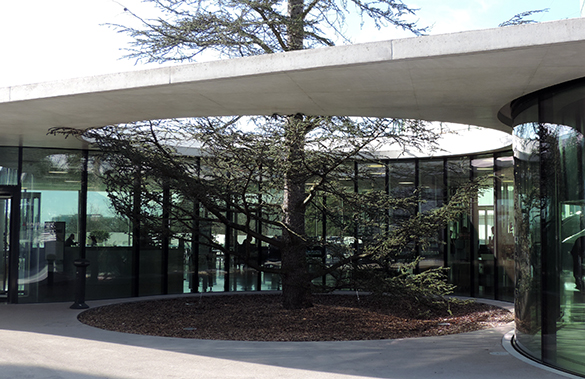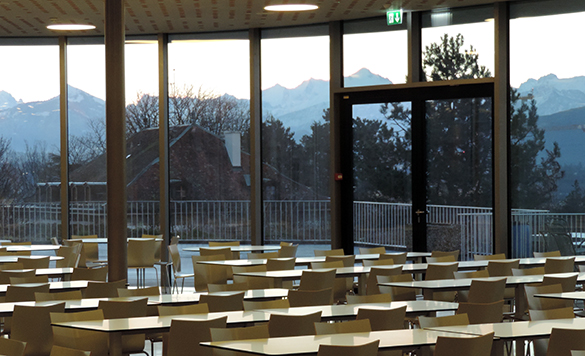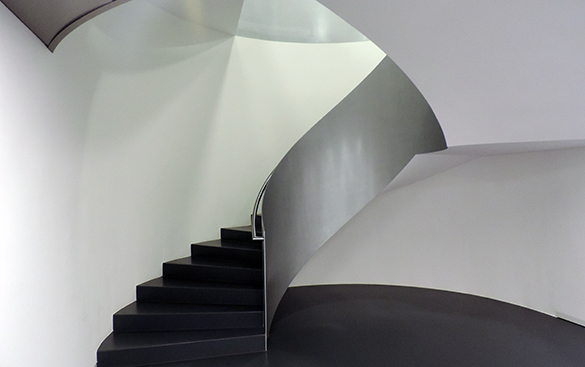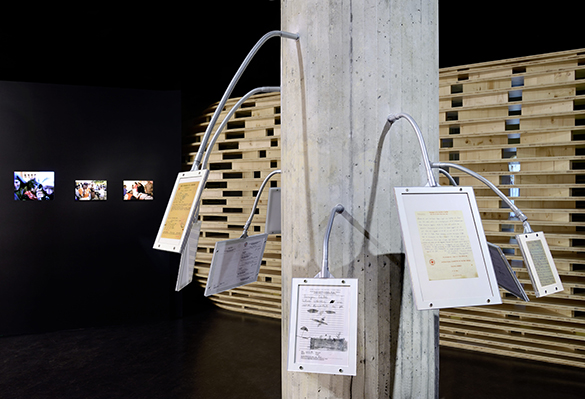My bicycle route to work takes me past Broken Chair in place des Nations. I grind my way up avenue de la Paix. On my left is the Russian Permanent Mission and then the International Museum of the Red Cross and Red Crescent. I look up at the former Geneva Carlton Hotel – now the head quarters of the International Committee of the Red Cross. The next building on the left of Peace Avenue is the Permanent Mission of the United States. On my right all the way is the United Nations.
For three years, the hill which houses the Museum and upon which sits the ICRC is a massive construction site. Now the cranes are gone. The rubble is grassed over. The ICRC’s new visitor centre is a design master stroke. Two enormous, tiered, horizontal glass facades are set into the hill. I hear later that a stipulation handed down to the designers, Group 8, is that the new structure should not compete visually with the grandeur of the ex-Carlton. But, just as the sun rises over the distant alps on a crisp March morning, it does compete and beautifully so. It strikes a bold contrast of old and new: traditional stone, plaster, tiles and shutters versus modern, minimal, doorless glass.
Above the Museum there is the new centre’s restaurant. It too has stunning design features.
A huge circular opening in the roof overhang accommodates a mature cedar tree: an ingenious juxtaposition of cement, glass and nature.
Looking for more, I enter the restaurant. I am the first of the day’s customers for coffee. Mont Blanc stands tall in the distance. I like this place.
An elegant, sleek, clean, curvy and cool guggenstairwell takes me into the heart of this ambitious project housing a new conference facility – the Humanitarium – and a refurbished Museum. The name of the first invites a look at what happens in the second.
Red Cross people tend to favour rather sober surroundings for their deliberations. But, the atmosphere of the high-tech Humanitarium is mood-lightening. This is due, in part, to faux-clouds cleverly created by the shapes of and lighting between vertical ceiling panels. Bravo, Group 8!
I meet the Director of the Museum, Roger Mayou. What does the reconstruction mean for his domain? He explains it brings additional space especially for temporary exhibitions. I ask him what aspects of the whole project he is most pleased with. He bristles with pride – and rightly so – inviting me to take a tour. I am to discover that the spirit of innovative design that catches my eye from outside bores deep into the permanent exhibitions of the Museum.
The “humanitarian adventure” is a stunning ensemble of three contrasting visual concepts each interactive and each the brainchild of a different architect: “Defending human dignity” – Bravo, Gringo Cardia!, “Restoring family links” – Bravo, Diébédo Francis Kéré! and “Reducing natural risks” – Bravo, Shigeru Ban! The exhibitions are joined by the common thread of witnesses. Each witness is a life-size touch-screen image; to hear his or her story I press my fingers against an outstretched hand.
One theme bowls me over. “Restoring family links” is poignant in the extreme. I push through a dense curtain of limb-entangling chains. The links slide coldly over the back of my hand: the hand that will, in a few minutes, initiate contact with witnesses who have lost links to family through conflict. This is a design feature that is brilliant and engaging; it is a little unsettling. In my experience, touch is a sense rarely stimulated in museums.
The first display I encounter in this theme is the mind-numbing collection of 6 million registration cards of the International Prisoners of War Agency established by the ICRC in 1914 shortly after the outbreak of World War I. There is a desk where I can carry out my own search for an individual prisoner. My second encounter is with the “message tree.” Its branches are hung with Red Cross messages: sometimes the only means of contact between detained people and their loved ones. Powerful! Visit this Museum!
This week, the United States threatens Russia over military forces and flags in Crimea. The stuff of war! Diplomats in their black limousines, shuttling heatedly up and down avenue de la Paix between the respective Permanent Missions, must pass right in front of the Humanitarium and the Museum. I hope they too notice the glass facades and stop to see what is behind them.








Thanks, Robin, for your article. I agree with all what you say! LOL
And congratulations for the wonderfull pics.
Very cool post, Robin, showing off some novel architecture and an engaging museum. With your photos and descriptions, I feel like I’ve visited, even though I’m across the Atlantic.
Are the ICRC’s Nobel prizes displayed in the museum?
Thanks, Alex. Nice to know that even over the Atlantic the diplomatic comings and goings in Geneva are recognised!! The Nobel prizes are, I think, housed in the ICRC – not the museum.
Best wishes,
Robin